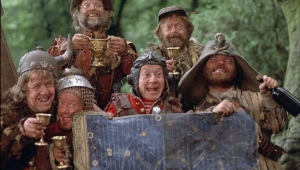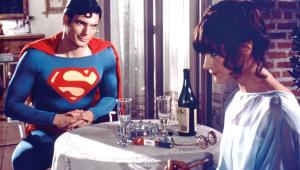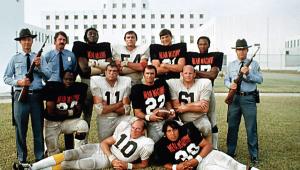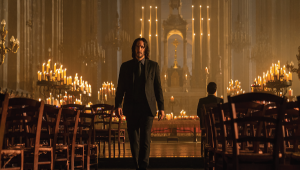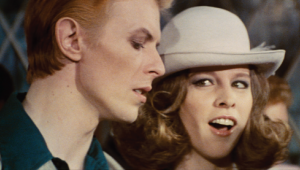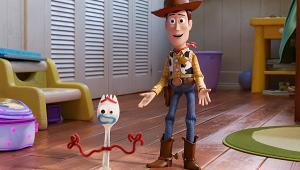Reservoir Dogs and Pulp Fiction

Few movies of the past three decades have entered the world's popular culture with the impact of Mr. Tarantino's sophomore effort, Pulp Fiction. From the music to the clothing to the eminently quotable dialogue, it's truly iconic in a way many filmmakers only dream of, the sort of instant classic that even non-movie-fanatics feel it's okay to embrace. Settle in for more intertwined exploits of morally ambiguous L.A. denizens, again with a time-shifting structure that confuses some but genuinely elevates the narrative. If only I could get Chuck Berry and that dance number out of my head…

An ardent supporter of the physical film format, Tarantino reportedly was not involved in these upgraded home entertainment releases, yet both turned out quite well. Reservoir Dogs displays extraordinarily deep, natural blacks, a boon from start to finish. Closeups show off a range of skin tones, some deadly pale, while Mr. Blue's interesting complexion and the tiny droplets of blood on Mr. White's face are now revealed in 2160p. Colors are likewise outstanding in subtle ways, such as in the faint green tint of the warehouse walls brought to new life.
Both movies were shot on 35mm film by Andrzej Sekula, the director's go-to cinematographer for a time, and Pulp Fiction is clearly more stylized and visually fun. This is a prettier, more colorful outing, with shades that are more natural and believable than in past transfers. The anomalies of focus from the anamorphic lenses and the edges in the split-focus diopter shots are plain to see, and thanks to Dolby Vision, the distinctive lighting inside Jack Rabbit Slim's has never been more nuanced and inviting. The reproduction of blacks is definitely improved over older editions, but not as dramatically so as in Dogs.
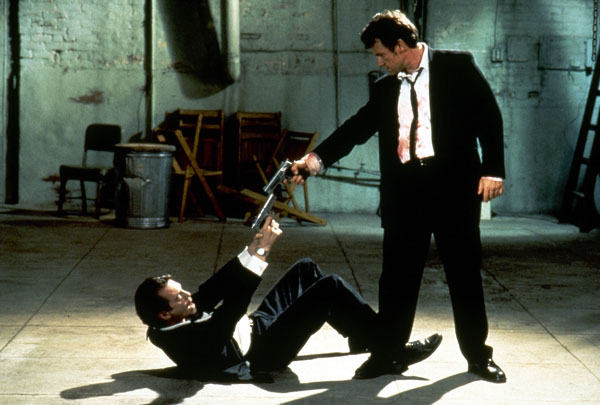
Originally mixed as it was in the infancy of the Dolby Digital era, Reservoir Dogs (now in TrueHD) is somewhat front-heavy, with the surrounds used for details like room tone, atmospheric fill, or the hustle and bustle of a busy restaurant. K-Billy's radio programming wafts in intermittently, and any lingering illegibility of the dialogue is due to the actors' performances, not any shortcomings in the track itself.
Pulp Fiction kicks up the audio a notch with generous off-screen cues: people watching T.V., the activity around Butch's apartment complex, traffic, or birds chirping outside during Captain Koons' "gold watch" monologue. Crowds mill about assertively in the rear speakers at times, and the pop tunes are mixed prominently, indicating their importance to the experience. Voices are full, and gunshots resonate effectively.
Reservoir Dogs' 4K platter contains no special features, but the supplied HD Blu-ray ports three deleted scenes, two alternate angles on the infamous ear attack, a 2006 featurette with critics and experts, and a bizarre psychological profile of four characters. Pulp Fiction carries over the fun trivia text track—a rarity for an Ultra HD disc—extensive 2011 interviews with several key cast members plus a featurette. A wealth of previous supplements remains on the included HD Blu-ray, some still eminently watchable. There is no new bonus content of any kind for either title, and in the case of Reservoir Dogs, several legacy extras have been dropped for this latest incarnation. A single-vendor digital copy is provided for each.
Kudos to Lionsgate and Paramount for delivering truly exceptional new video masters of two undeniably worthy fan favorites.
Reservoir Dogs
Ultra HD 4K Blu-ray
Studio: Lionsgate, 1992
Aspect Ratio: 2.35:1
HDR Formats: Dolby Vision, HDR10
Audio Formats: Dolby TrueHD 5.1
Length: 99 mins.
MPAA Rating: R
Starring: Harvey Keitel, Tim Roth, Michael Madsen, Steve Buscemi
Pulp Fiction
Ultra HD 4K Blu-ray
Studio: Paramount, 1994
Aspect Ratio: 2.35:1
HDR Formats: Dolby Vision, HDR10
Audio Formats: DTS-HD Master Audio 5.1
155 mins.
MPAA Rating: R
Starring: John Travolta, Samuel L. Jackson, Uma Thurman, Bruce Willis


